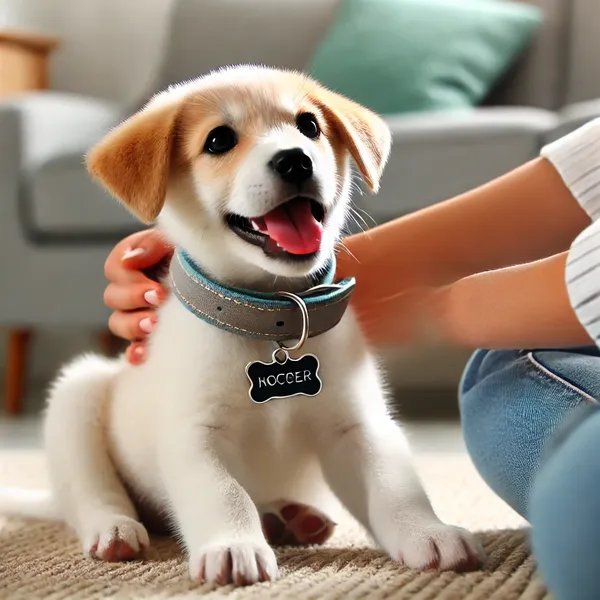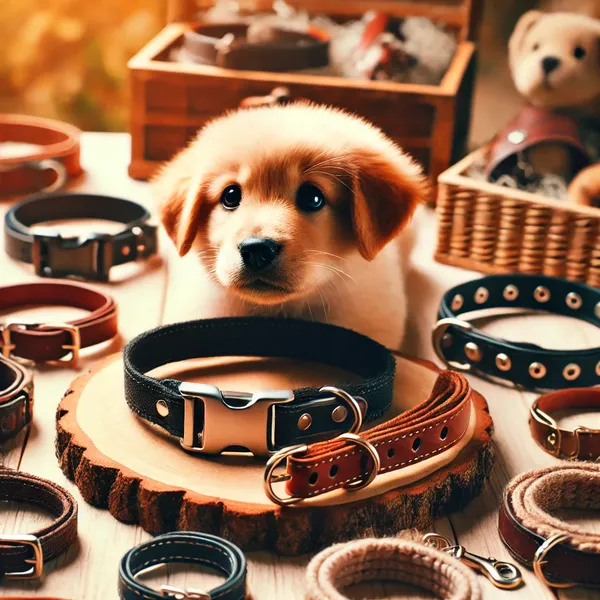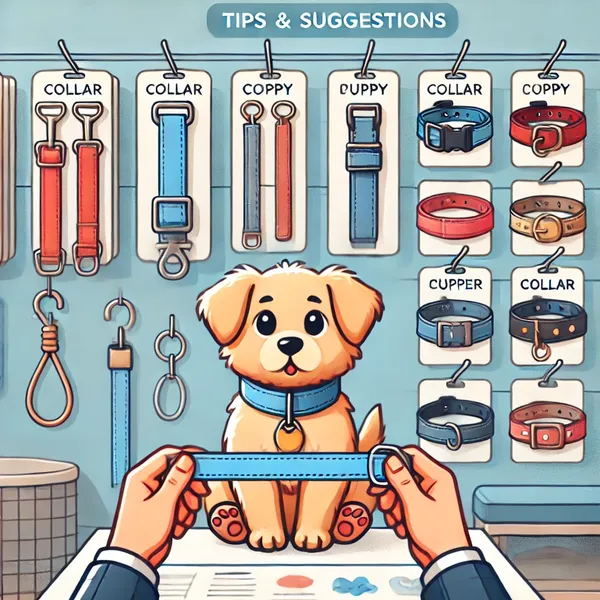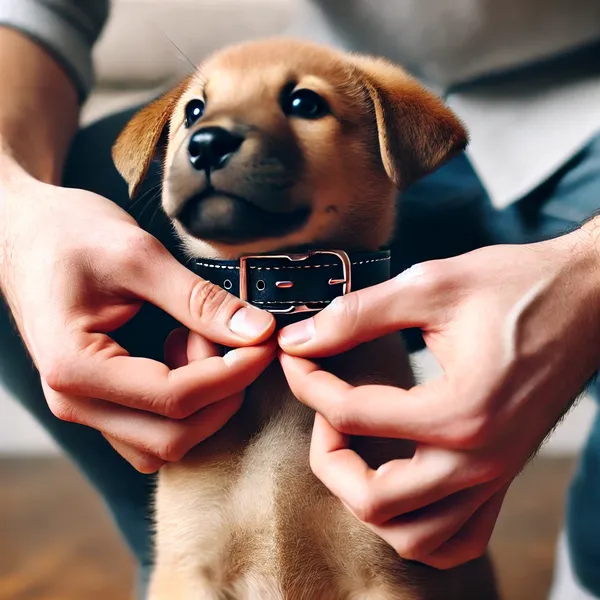What is the best type of collar for a puppy? Every novice owner may have a concern about finding a puppy collar. What can be more satisfying than coming back home with a pet? Many things, thanks to training, toys, first tender touches, and so on. However, one such consideration that cannot be ignored is the appropriate collar for the pup.
A collar was not created only for decorative purposes. It has numerous significance for both the puppy and the owner. Above all else, it helps to keep the puppy contained, assuages any training issues, and keeps the puppy pleasant while it engages in its surroundings. This guide will take you through the various collar types and the most suitable ones to buy for your puppy.
Why Does Your Puppy Need a Collar?

Without wasting time, let’s examine the different kinds of collars first. The first concern addressed is the necessity of a collar for your puppy. The collar serves a purpose other than just being a means to attach the lead. Here are a few points:
- Identification: Tagging your puppy is done through the collar as it has the Identification seen on most puppies.
- Safety: The wear and tear over control of collars provides a comfort zone when measuring up control of the dogs, especially when the dog is still learning commands.
- Training: Wearing collars is essential during leash training and teaching the puppy self-control when on walks.
Now that we have a reason for the necessity of a collar let’s explore the options.
What is the Best Type of Collar for a Puppy?

There are dozens of different collars, each designed for a particular puppy’s needs, so getting the right one is essential. Here is an overview of some of the usual collars and their best applications.
1. Flat Collars
The most likely type of collar you will come across is the flat collar. It’s the plain, everyday style of collar whose brunt of strength relies on buckle or snap mechanisms for fastening.
Pros:
Great for identification: This type of collar makes attaching tags with your puppy’s name easy.
Simple and easy to use: Attach it, and you are ready to walk away.
Comfortable: Most flat collars have padded soft materials that will not irritate your puppy.
Cons:
Not for pulling: It will not provide as much control when your puppy pulls on his leash with this collar on, and it might strain the puppy’s neck.
Best for Daily use, tag holding, and pups already trained on a leash.
2. Martingale Collars
Martingale collars are commonly called “no-slip collars.” They are constructed to pull slightly when the puppy pulls, thereby ensuring the puppy does not pull away without choking.
Pros:
- Helps prevent slipping: This collar is perfect if your puppy has the habit of shaking off collars.
- Gentle tightening: The collar tightens just enough to stop the puppy from slipping out without causing any pain to the pet.
- Great for training: This is helpful when teaching your puppy to be leashed without messing around as much.
Cons:
- Not for unsupervised use: This type of collar is only worn with supervision as the adjustable aspect can pose a risk when it has been worn for an extended period
- Best for: Puppies who are Houdini’s out of collars or puppies who need help improving their leash skills.
3. Harnesses
Although not exactly a collar, harnesses are wearable devices for animals and deserve a mention. Most puppy owners choose harnesses instead of collars because they allow them to better control their puppy without hurting its neck.
Pros:
- Pressure distribution: A harness is meant to be worn across the dog’s chest and shoulders, eliminating pressure at the dog’s neck.
- Brilliant for training: A better means of controlling active puppies who tend to jerk at the leash.
- Comfortable for shorter breeds: A harness is more advantageous for small or fragile puppies since their necks are more vulnerable.
Cons:
- More intricate: Some harnesses can be hard to fasten, especially when putting on a restless puppy.
- Defeats the purpose of the collar: a reliable collar is still needed for attaching ID tags.
- Ideal For: Puppies that do the collar leash or puppies with gentle and tender necks.
4. Breakaway Collars
A breakaway collar is made to break away so that it does not cause injuries through pulling. Such a collar is typically for puppies and small dogs who go to places and activities where they can get caught.
Advantages:
- The collar does not pinch the neck of the puppy in case of rough play since it readily breaks.
- It will keep your puppy’s ID symbols for daily use or can be worn as a conventional collar as long as the puppy does not pull the leash too much.
Disadvantages:
- Don’t use this type, ‘775, ‘ in collar training. Because that feature collapses, one cannot secure the dog properly for a leash walk as the dog retrieves facing away from the handler and pulls.
- Ideal For: Puppies who want to venture outdoors or in environments with available sticking objects.
5. Head Collars
A head collar is a dog leash that wraps around a puppy’s nose and behind its ears to prevent the puppy from pulling.
Advantages:
- Great for restrictors: This collar gives much control while not stressing the neck.
- Kind: It guides your pup without tugging or wrenching.
Disadvantages:
- Some adjustments are necessary: Some head collars the puppy may be uncomfortable with at first and, therefore, not be allowed to be worn.
- Not for constant use: Training head collars should only be used during the training period.
- Ideal for: Leashed puppies tug frequently and require help on their walks.
Comparison Table of Puppy Collars
| Type of Collar | Pros | Cons | Best For |
| Flat Collar | Easy to use, holds ID tags, comfortable | Not ideal for pulling puppies | Everyday use, basic ID needs |
| Martingale Collar | Prevents slipping, gentle tightening | Not for unsupervised use | Training and escape artists |
| Harness | No neck strain, good for training | Complex to put on, needs separate ID collar | Pullers, puppies with neck sensitivities |
| Breakaway Collar | Safe for outdoor use, prevents accidents | Not secure for leash walking | Outdoor play, safety |
| Head Collar | Excellent control for pullers, humane | Takes time to adjust, not for long-term wear | Leash training and strong pullers |
How to Buy a Collar for Your Puppy – Tips and Suggestions

Knowing the different types of collars available for puppies, you may ask yourself, How do I choose the one that best fits my puppy? The following are some guidelines to assist you in making a choice:
1. Look at the Size and Breed of your Puppy
Puppies come in all shapes, sizes, and temperaments, depending on the breed, and so some collars work better on some breeds than others. For instance, little or fragile breeds can use a harness, while more active and bigger puppies can use the martingale collar.
2. Evaluate Your Puppy’s Behavior
Does your puppy yank the leash or attempt to escape the collar? In either case, a harness or a martingale collar is best. In contrast, refrain from using anything other than a simple flat collar if your puppy’s leash training is practical.
3. Look for a Collar That Offers Comfort
The puppy’s collar should fit well and be comfortable for everyday use. Consider collarwithve characteristically soft and smooth materials that allow adjustment and padding where possible. You do not want your puppy to start dreading wearing the collar because it is uncomfortable!
4. Safety First
Safety must always come first. If your puppy is an outdoor puppy and enjoys running outdoors, then you should consider a breakaway collar to avoid any hazardous incidents. In such a situation where they can squeeze themselves into a tight place, you need a collar that a person caught will let go of.
How to Adjust Your Puppy’s Collar – Applying the Two-Finger Rule

It’s also important not to make your puppy’s collar too tight or loose. A good principle is applying the two-finger rule. You should be able to place two fingers comfortably between the collar and the puppy’s neck. If you cannot do so, then it’s too tight. If more than two fingers can fit, then it’s too loose.
It is essential to note that the best collar for a puppy depends on that puppy’s individual needs. There is an ideal collar for every puppy, whether an escape artist, a puller, or a well-behaved puppy. Please don’t forget to consider your puppy’s comfort, safety, and behavior when deciding. A well-fitting collar for a happy puppy will make training, walking, and daily activities smoother without any hindrances!
So, which one would you think your puppy will enjoy the most? We recommend trying it out for your new fluffy friend and see how they feel with the additional stylish gear!